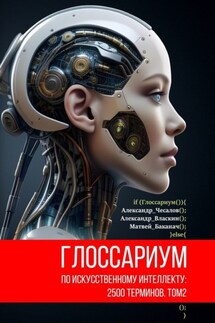Глоссариум по искусственному интеллекту: 2500 терминов. Том 2 - страница 16
Behavior informatics (BI) — the informatics of behaviors so as to obtain behavior intelligence and behavior insights146.
Behavior tree (BT) is a mathematical model of plan execution used in computer science, robotics, control systems and video games. They describe switchings between a finite set of tasks in a modular fashion. Their strength comes from their ability to create very complex tasks composed of simple tasks, without worrying how the simple tasks are implemented. BTs present some similarities to hierarchical state machines with the key difference that the main building block of a behavior is a task rather than a state. Its ease of human understanding makes BTs less error-prone and very popular in the game developer community. BTs have shown to generalize several other control architectures147.
Belief-desire-intention software model (BDI) is a software model developed for programming intelligent agents. Superficially characterized by the implementation of an agent’s beliefs, desires and intentions, it actually uses these concepts to solve a particular problem in agent programming. In essence, it provides a mechanism for separating the activity of selecting a plan (from a plan library or an external planner application) from the execution of currently active plans. Consequently, BDI agents are able to balance the time spent on deliberating about plans (choosing what to do) and executing those plans (doing it). A third activity, creating the plans in the first place (planning), is not within the scope of the model, and is left to the system designer and programmer148.
Bellman equation – named after Richard E. Bellman, is a necessary condition for optimality associated with the mathematical optimization method known as dynamic programming. It writes the «value» of a decision problem at a certain point in time in terms of the payoff from some initial choices and the «value» of the remaining decision problem that results from those initial choices. This breaks a dynamic optimization problem into a sequence of simpler subproblems, as Bellman’s «principle of optimality» prescribes149.
Benchmark (also benchmark program, benchmarking program, benchmark test) – test program or package for evaluating (measuring and/or comparing) various aspects of the performance of a processor, individual devices, computer, system or a specific application, software; a benchmark that allows products from different manufacturers to be compared against each other or against some standard. For example, online benchmark – online benchmark; standard benchmark – standard benchmark; benchmark time comparison – comparison of benchmark execution times150.
Benchmarking is a set of techniques that allow you to study the experience of competitors and implement best practices in your company151.
BETA refers to a phase in online service development in which the service is coming together functionality-wise but genuine user experiences are required before the service can be finished in a user-centered way. In online service development, the aim of the beta phase is to recognize both programming issues and usability-enhancing procedures. The beta phase is particularly often used in connection with online services and it can be either freely available (open beta) or restricted to a specific target group (closed beta)









